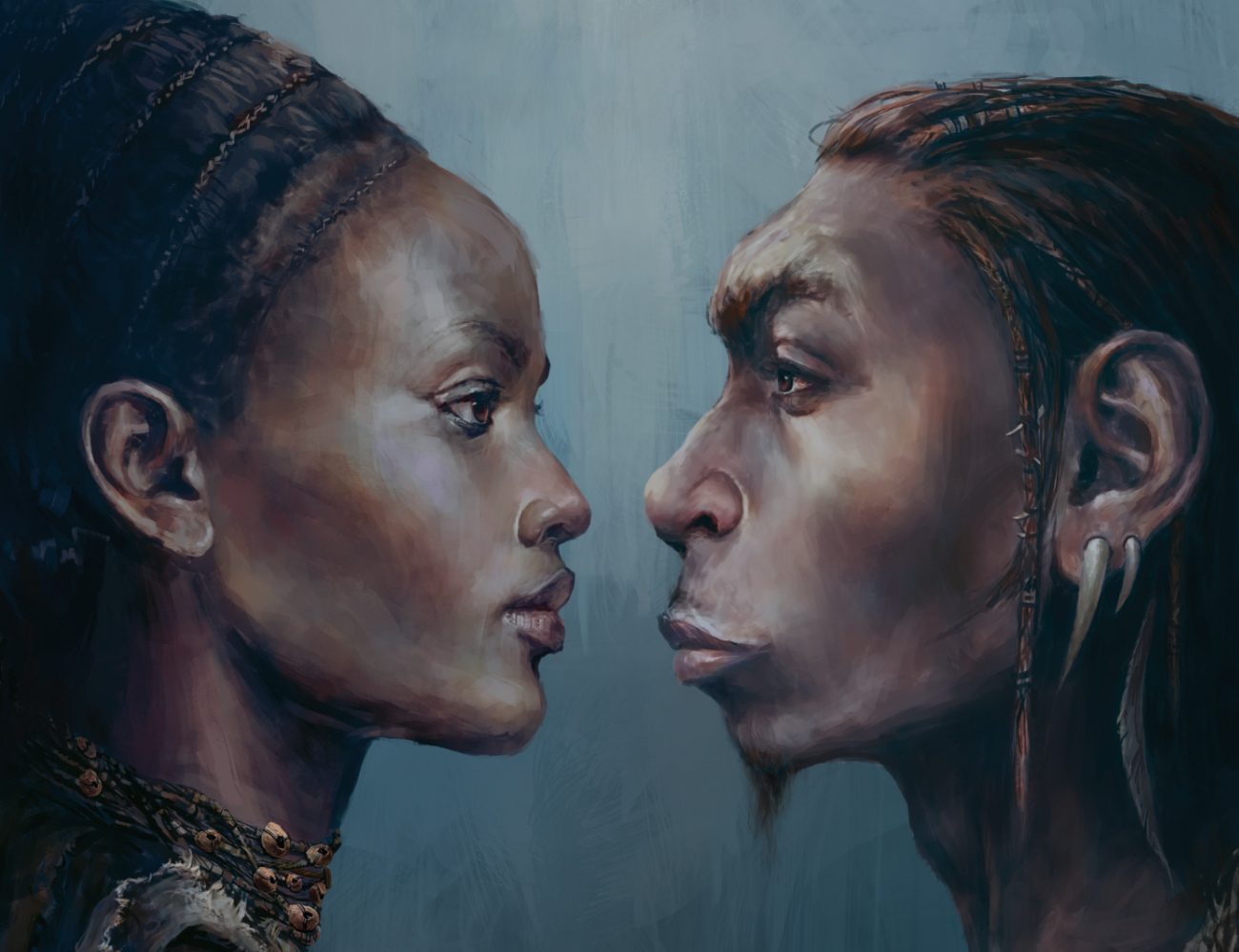We’re little known to be Neanderthals: traces of past mixtures between human forms are known from the genomes of present and fossil humans. Two researchers have now investigated the extent to which hybridization events are also reflected in the anatomical features of the fossils. They were able to identify the signs in some of the cranial structures and thus also gained evidence of interbreeding backgrounds in fossil humans. However, scientists emphasize that the field of research is still in the infancy of its development.
Structural features, skull shapes, dental structures: in order to obtain information about the members of the human family tree, scientists have long been limited to anatomical clues. But that has now changed: genetics has revolutionized anthropology. Because in some cases it is still possible to get DNA from fossils that are thousands of years old, which can be used for comparisons. As a result, researchers have already been able to establish that admixture with other subspecies of earlier human forms played an important role in the evolution of our species. Specifically, it turns out that when Homo sapiens migrated from Africa to Europe and Asia, it mixed with the Neanderthals who already lived there. These crossings resulted in a small percentage of “old” DNA in the genomes of many modern humans.
Target morphological signs
In addition, in some human fossils from the era of the coexistence of modern humans and Neanderthals, scientists have found traces of modern interbreeding. When researching the history of interbreeding, Katrina Harvati of the University of Tübingen and Rebecca Ackermann of the University of Cape Town are now calling for a renaissance of traditional anthropological methods: the effects of admixture can also be recorded using anatomical evidence. Because, they explain, many interesting fossil finds have not preserved any usable DNA to provide insight into the ancestors of these people. It would therefore be useful to be able to obtain indices for hybridization based on morphological characteristics.
To provide a basis for this approach, the researchers examined a large number of fossil remains of early humans from Eurasia, dating from about 40,000 to 20,000 years ago. Traces of genetic material were found in many of these individuals, indicating that they had a Neanderthal lineage. In some cases, ancient evidence suggests that crossbreeding occurred only a few generations ago. The researchers compared the anatomical features of the skeletal remains of these individuals with those of “unincorporated” Neanderthals and with the earliest and younger representatives of Homo sapiens from Africa.
Possible indications for hybrid
Harvati and Ackermann examined the mandible, brain and face particularly intensely for signs of hybridization: they searched for morphological transitional forms between Neanderthals and anatomically modern humans. They were also guided by the well-known familiar patterns of hybrids of different mammals. “It is estimated that about ten percent of animal species produce hybrids, including, for example, cattle, bears, cats and canines,” Ackermann says. Hybrids are also known in primates, our close relatives, such as baboons.
As can be seen from the results, it seems that the crossbreeding background cannot be seen in people of the Late Paleolithic at first glance: the scientists did not find any clear patterns of an indicative character in the facial structures. However, the effects were evident in more subtle traits: as reported by Harvati and Ackermann, they found signs of hybridization in some of the cranial and mandibular traits. Based on these results, they also identified some fossils, for which no genetic data is available, as possible hybrids. These include samples from the Middle East – an area where the two groups are known to have met – but also some samples from Western and Eastern Europe.
However, the researchers stress that these are only indications so far. They view their work as an experimental study designed to show the possibility of combining clues. “When possible, an individual’s hybrid status should be confirmed using genetic data, so we consider our results as hypotheses to be tested,” Harvati says. “But we hope they will also encourage other researchers to study the fossils more closely and combine multiple lines of evidence to discover interbreeding,” says the anthropologist.
Source: Eberhard Karls University of Tübingen, specialized article: The Nature of Ecology and Evolution, doi: 10.1038/s41559-022-01875-z

“Alcohol buff. Troublemaker. Introvert. Student. Social media lover. Web ninja. Bacon fan. Reader.”






More Stories
Ecologists Celebrate New Xesap National Park in Laos | Science
Is the wrong diet making you forget?
We can study it with a new telescope.